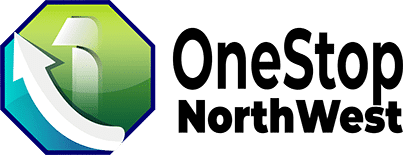
Introduction
If you’re a small business owner stepping into the digital world, knowing how to design a website with SEO in mind is crucial. It’s not just about having a visually appealing site; it’s about creating a platform that drives traffic and engages visitors effectively. SEO—or Search Engine Optimization—ensures your site is discoverable by search engines, which is essential for attracting more visitors. At the same time, balancing this with a well-designed site ensures that once visitors land on your page, they stay there.
When designed correctly, a website serves as a robust tool not just for visibility but also for enhancing user engagement and conversions. This involves implementing SEO from the ground up, integrating it into every aspect of your web design, from planning the structure and content to optimising mobile responsiveness and site speed. This approach helps in building a site that not only ranks well in search results but also provides a seamless user experience.
SEO isn’t a one-time setup but a continuous aspect of your website management. Keeping this balance can make a significant difference in how your brand performs online. Therefore, it’s imperative to focus on both – a design that captivates and an SEO strategy that dominates.

Step 1: Keyword Research and Site Structure
When you’re figuring out how to design a website with SEO in mind, the foundation begins with solid keyword research and a well-planned site structure. Let’s break down these crucial first steps into manageable parts.
Keyword Selection and Competitor Analysis
Keyword Selection:
Start by identifying the terms your potential customers are searching for. Tools like Google’s Keyword Planner can help you discover keywords related to your business. Look for both high-volume keywords and long-tail phrases that offer less competition but are very targeted.
Competitor Analysis:
Knowing what your competitors are doing can give you a strategic advantage. Use tools like SEMrush or Ahrefs to peek into the keywords they rank for and how they structure their content. This insight lets you find gaps in their strategies and areas where you can excel.
Site Structure, URL Structure, Sitemap Creation
Site Structure:
Your website should be organized like a well-sorted filing cabinet. Each main category (like Services, About Us, Blog) should be clearly defined, and subcategories should be logically placed within these. For instance, if you have a digital marketing service, under it, you could have SEO, Content Marketing, and Social Media Marketing as subcategories.
URL Structure:
Each URL should be easy to understand and include relevant keywords. For example, a URL like www.example.com/services/seo-audits clearly indicates the page content and is SEO-friendly.
Sitemap Creation:
A sitemap is like a roadmap of your website that guides search engines through all your important pages. Tools like Google Search Console can be used to submit your sitemap directly to Google, ensuring that all your pages are found and indexed.
By starting with thorough keyword research and setting up a logical site structure, you lay a robust foundation for SEO success. This approach not only helps in better indexing by search engines but also improves user navigation, enhancing the overall user experience on your site.
Moving forward, let’s delve into optimizing website content to match the SEO setup we’ve started to establish.
Step 2: Optimizing Website Content
Optimizing your website content is crucial for both engaging your audience and improving your SEO. Here’s how you can make your content work harder for your site’s SEO performance.
Quality Content
Creating quality content starts with understanding your audience’s needs and answering their questions. Your content should provide value, whether it’s through solving problems, offering insights, or sharing relevant news. Content that engages your users will likely engage search engines too. Regular updates and fresh posts signal to search engines that your website is active, boosting your SEO efforts.
Readability
Ensure your text is easy to read and understand. Use short sentences and paragraphs, and avoid complex vocabulary. This not only helps people who visit your website but also improves the accessibility for search engines. Tools like the Hemingway App can help you achieve clear and concise text.
Header Tags
Using header tags (H1, H2, H3, etc.) helps break down content into manageable sections that guide readers through your page. Your main title should be H1, and it should include your primary keyword. Subsequent headers can help organize content and should also include relevant keywords. This structure helps search engines understand the hierarchy and the content of your page.
Meta Descriptions
Meta descriptions are short descriptions that appear under your page title in search results. They should be compelling and include key phrases to encourage users to click on your link. Although meta descriptions themselves do not directly impact search rankings, a well-written meta description can improve click-through rates, which are important for SEO.
Alt Text and Image Optimization
Images enrich your content and can also boost your site’s SEO. Use descriptive file names and alt text for your images, incorporating relevant keywords where appropriate. Alt text improves accessibility for users with visual impairments and helps search engines understand the images’ content, which could lead to better visibility in search results.
By optimizing your website content as described, you not only enhance the user experience but also strengthen your site’s SEO. This thoughtful approach to content creation and management ensures that both users and search engines can appreciate and understand your site’s value.
As we’ve optimized the content, next, we will focus on ensuring the site performs well on any device and loads quickly, which are crucial aspects of modern SEO. Let’s move on to discussing mobile responsiveness and site speed in the next section.
Step 3: Mobile Responsiveness and Site Speed
When designing a website with SEO in mind, it’s critical to ensure your site is both mobile-friendly and fast. This step focuses on mobile-first design, responsive design, optimizing page speed, image compression, and browser caching.
Mobile-First and Responsive Design
Mobile-first design means starting the design of your website from the smallest screen and scaling up. This approach ensures that the most essential elements are prioritized on smaller screens, which is crucial since Google indexes mobile sites first.
Responsive design is about creating a site that dynamically adjusts its layout, images, and content to fit the device it’s being viewed on. This ensures a seamless user experience across all devices, from smartphones to desktops.
Page Speed
Page speed is a vital factor in user experience and SEO. A slow-loading website can increase bounce rates as users are likely to leave if a page takes too long to load. According to research, users expect a site to load in 2-3 seconds. If it takes longer, they might leave and visit a competitor’s site.
Image Compression
Large images can slow down your website significantly. Optimizing your images by compressing them and using the correct formats (like JPEG for photos and PNG for graphics with fewer than 16 colors) can reduce your load time without sacrificing quality. Tools like Adobe Photoshop, or online compressors like TinyPNG, can help with this task.
Browser Caching
Enabling browser caching can make your website load faster for repeat visitors. It works by storing elements of your site in the user’s browser the first time they visit. Next time they visit, the browser can load the page without sending another HTTP request to the server for those elements.
Implementing these strategies will not only improve the user experience but also boost your SEO efforts by reducing load times and making your site more accessible to mobile users. As we’ve enhanced mobile responsiveness and site speed, let’s move on to internal linking and navigation, which are critical for guiding users and search engines through your site efficiently.
Step 4: Internal Linking and Navigation
Internal Linking
Internal linking is like the road map of your website. It helps both users and search engines navigate your site and understand the relationship between different pages. Here’s how to do it effectively:
- Strategic Link Placement: Place links in your content where they feel natural and helpful. For instance, if you mention a topic that’s covered more in-depth on another page, link to that page.
- Link Quality: Use descriptive anchor text that gives an idea of what the page linked to is about. Instead of “click here,” use “learn more about SEO strategies” if that’s what the link leads to.
- Link to Important Pages: Make sure that your most important pages — like those that detail your services or products — have more internal links pointing to them. This increases their visibility and importance to search engines.
Navigation Bar
Your navigation bar is crucial for good user experience. It should be simple and intuitive. Here’s what you should keep in mind:
- Simplicity: Keep your navigation bar uncluttered. Limit the number of menu items to avoid overwhelming your visitors.
- Visibility: Position your navigation bar prominently, usually at the top of the page, so it’s easily accessible.
- Descriptive Labels: Use clear, descriptive labels for your navigation items. For example, instead of “Services,” use “SEO and Web Design Services” if that’s what you offer.
Breadcrumb Links
Breadcrumb links are a secondary navigation scheme that reveal the user’s location in a website. They are beneficial for two main reasons:
- Enhanced User Experience: Breadcrumbs provide a clear path back to previous pages, akin to leaving a trail in the woods. They help users navigate your site without hitting the ‘back’ button.
- SEO Benefits: They help search engines understand the structure of your site and enhance the crawling efficiency.
Content Buckets
Organizing your content into buckets or categories helps in creating a cleaner and more organized site architecture. Here’s how to utilize them:
- Logical Grouping: Group related content together under a unified category. This not only helps users find content more easily but also helps search engines understand relations between different pages.
- Consistent Categories: Maintain consistency in how you categorize content across your site to avoid confusion for both users and search engines.
By carefully linking internally, maintaining a clear navigation structure, utilizing breadcrumb links, and organizing content into logical buckets, you enhance both the user experience and SEO performance of your site. This structured approach guides users smoothly through your content, encouraging longer visits and better interaction rates. As we have now optimized the internal structure, the next step is to monitor and continually improve the SEO performance to keep up with changes in search engine algorithms and user expectations.
Step 5: Monitoring and Improving SEO Performance
In the changing world of SEO, staying on top of your website’s performance is crucial. This step focuses on using tools like Google Analytics and PageSpeed Insights, alongside other SEO tools, to monitor and continuously improve your website’s SEO effectiveness.
Using Google Analytics
Google Analytics is a powerful tool for understanding how visitors interact with your site. It provides insights into user behavior, traffic sources, and content engagement. Here’s how to leverage Google Analytics for SEO:
- Track Bounce Rates: High bounce rates might indicate that your content is not relevant or engaging enough.
- Monitor Traffic Sources: Understanding where your traffic comes from helps you fine-tune your SEO strategies.
- Set Goals: Track conversions to see how well your SEO efforts are translating into actual business outcomes.
Leveraging PageSpeed Insights
Page speed is a critical factor for both SEO and user experience. Google’s PageSpeed Insights tool helps you analyze the content of a web page, then generates suggestions to make that page faster. A faster site enhances user experience and improves your site’s ranking in search results.
SEO Tools for Continuous Improvement
There are numerous SEO tools out there that can help you with different aspects of your SEO strategy. Tools like SEMrush, Ahrefs, and Moz offer features for keyword tracking, backlink analysis, and competitor insights. Using these tools, you can:
- Identify Keywords: Find new, relevant keywords and track how well you’re ranking for them.
- Analyze Backlinks: Understand who is linking to you and the quality of these links.
- Spy on Competitors: See what your competitors are doing right and learn from their strategies.
Commitment to Continuous Improvement
SEO isn’t a one-time task—it requires ongoing effort and adaptation. Search engines frequently update their algorithms, so what works today might not work tomorrow. Keep testing and tweaking:
- Stay Updated: Keep an eye on SEO news for any major algorithm updates.
- Experiment: Try new SEO tactics to see what works best for your specific audience.
- Feedback Loop: Use user feedback to understand what they like or don’t like about your site, and adjust accordingly.
By continuously monitoring these aspects and adapting your strategies, you ensure that your website not only stays compliant with search engines but also provides a great user experience. This ongoing process helps in maintaining and improving your site’s search engine rankings and overall performance. As you keep refining your SEO strategy, the goal is to meet user needs and expectations, which in turn boosts your SEO results.
In the next section, we will look into some frequently asked questions about designing SEO-friendly websites to clarify common doubts and provide further guidance.
Frequently Asked Questions about Designing SEO-Friendly Websites
How do I ensure my website is mobile-friendly?
Ensuring your website is mobile-friendly is crucial, not only for user experience but also for SEO performance. Here’s how you can achieve this:
- Responsive Design: Use responsive web design. This means your site adjusts to fit the screen size of the device it’s being viewed on, whether it’s a desktop, tablet, or smartphone.
- Mobile Testing: Regularly test your website using tools like Google’s Mobile-Friendly Test to see how well it performs on mobile devices.
- Simplify Navigation: Keep the navigation simple and thumb-friendly. Large buttons, accessible menus, and a clear path to important information help users navigate your site on mobile.
- Optimize Media: Compress images and videos so they load faster and don’t slow down your site on mobile devices.
What are the best practices for internal linking?
Internal linking is a key SEO strategy that helps to establish site architecture and spread link equity. Here are some best practices:
- Use Descriptive Anchor Text: Use clear and relevant text for your links. This helps users and search engines understand what the linked page is about.
- Link Deep: Instead of just linking to your top-level pages, be sure to link to deeper, more specific content that might be buried deeper in your site.
- Create Content Hubs: Group related content together and link these pages to each other. This not only boosts SEO but also keeps users engaged by offering them more valuable content.
- Use Links Judiciously: Don’t overcrowd your pages with internal links. Only include links that are helpful and relevant to the content.
How often should I monitor my website’s SEO performance?
Monitoring your website’s SEO performance is an ongoing task that should be done regularly to ensure optimal performance. Here’s a simple timeline to help you keep track:
- Weekly: Check for basic analytics, such as traffic sources and page load times, to catch and resolve issues quickly.
- Monthly: Review your rankings and key metrics more comprehensively. Look for trends or drops in traffic that could indicate bigger issues.
- Quarterly: Conduct a thorough audit of your website every three months. Review your SEO strategy and adjust based on recent search engine updates and changes in user behavior.
- Annually: Take a deep dive into your content. Update or cull outdated content, and ensure that your website still aligns with your business goals and SEO best practices.
By addressing these frequently asked questions, you can better understand the nuances of creating and maintaining a website that ranks well and meets the needs of your users. Keep these tips in mind as you continue to develop and refine your website’s design and content.
Conclusion
At OneStop Northwest, we understand that the digital landscape is changing. Designing a website with SEO in mind isn’t just a one-time task—it’s a continuous journey of adaptation and learning. Our commitment to staying ahead in the SEO game ensures that your website not only reaches its target audience but also delivers on performance and user engagement.
Continuous Learning and Adaptation are at the heart of our approach. The world of search engine optimization is dynamic, with frequent updates from search engines and shifts in user behavior. We keep our fingers on the pulse of these changes, ensuring that your website is not only compliant with the latest SEO standards but also ahead of the curve.
Our team at OneStop Northwest leverages cutting-edge tools and strategies to monitor and enhance your website’s SEO performance. By embracing new technologies and methodologies, we ensure that your online presence is robust and effective.
Embracing Change for Growth
We believe in the power of education and regularly update our skills and knowledge. This continuous learning process allows us to implement innovative SEO strategies that drive traffic and conversions. Whether it’s adapting to Google’s latest algorithm updates or exploring new content marketing techniques, our goal is to provide you with the best possible outcomes.
Moreover, we understand that your business evolves, and so should your website. Our SEO services are designed to grow with your business, ensuring that your digital presence is always aligned with your current business goals and customer needs.
Why Choose OneStop Northwest?
Choosing OneStop Northwest means partnering with a team that is committed to your business’s success in the digital realm. We don’t just optimize your site for search engines; we optimize it for your customers. By focusing on both, we help you achieve meaningful engagement and sustainable growth.
In conclusion, the journey of integrating SEO into web design is ongoing and requires a partner who is equipped to handle the complexities of the digital world. At OneStop Northwest, we are that partner. Let us help you navigate the ever-changing landscape of SEO and web design, ensuring that your website not only looks good but also performs well in search engine rankings and delivers a fantastic user experience.
Ready to elevate your online presence? Visit our SEO services page to learn more and get started with us today. Together, we can build a website that not only ranks but also resonates with your audience.





